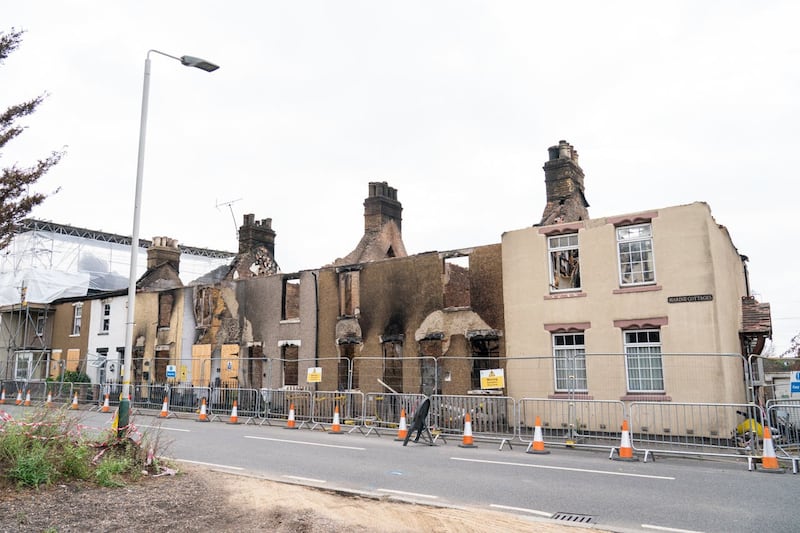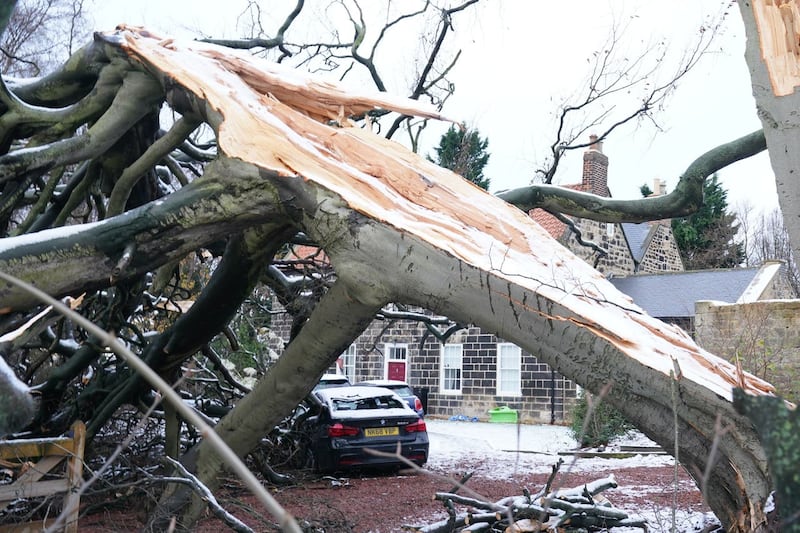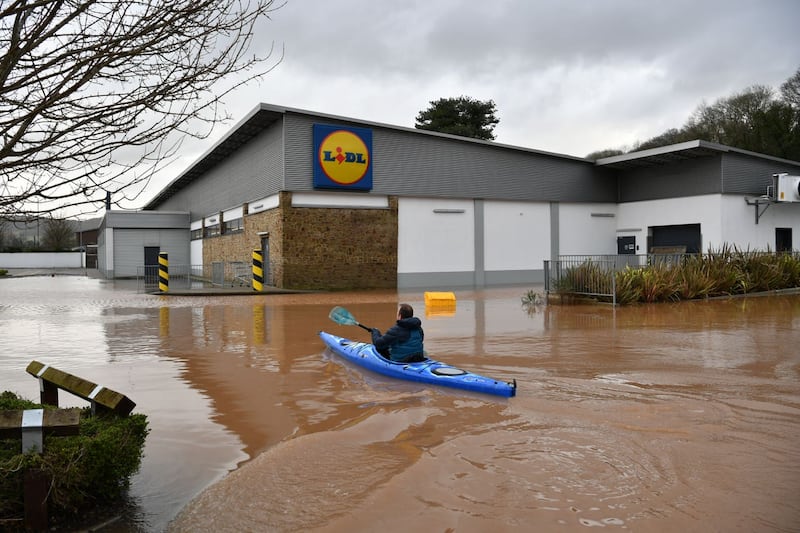Here are some recent examples of the Met Office issuing a rare red weather warning:
– Heatwave, July 2022
A heatwave in mid-July 2022 saw temperatures reach unprecedented levels in many parts of the UK, passing 40C for the first time on July 19 and peaking at 40.3C at Coningsby in Lincolnshire.
The conditions prompted the Met Office to issue its first ever red warning for extreme heat, covering much of central and southern England.
The Government declared a national emergency, Network Rail issued a “Do not travel” warning, and several fire services declared major incidents after multiple fires broke out, with a number of homes gutted in Wennington in east London.

Railway tracks buckled, gritters spread sand on some roads after surfaces began to melt, and there were several deaths associated with open water swimming.
– Storm Eunice, February 2022
Two red warnings for wind were issued for Storm Eunice, covering areas of south-west and south-east England.
It was the most severe and damaging storm to affect England and Wales since 2014, with winds of more than 81mph in exposed coastal locations and a gust of 122mph recorded on the Needles off the coast of the Isle of Wight, setting a new England gust speed record.
Four people died in the UK and Ireland as a result of falling trees, while more than a million homes were left without power, hundreds of flights were cancelled, and the Humber Bridge and both Severn Bridges were closed for the first time in their history.

– Storm Arwen, November 2021
A red warning for wind was issued for Storm Arwen, running down the eastern edge of the UK from Aberdeen to Newcastle.
The storm saw wind speeds of more than 69mph in many areas of Scotland and northern England, with a gust of 98mph recorded at Brizlee Wood in Northumberland.
More than one million homes lost power, three people died when they were hit by falling trees, and rail passengers in Aberdeenshire were stuck on a train overnight.

Snow added to the disruption across parts of the Pennines, while nearly 6in (15cm) of lying snow was recorded in Buxton in Derbyshire.
The National Trust reported the loss of many mature trees, including 50 trees at Bodnant Gardens, Conwy, and hundreds of grey seal pups were lost from beaches along the North Sea coast.
– Storm Dennis, February 2020
A red warning for rain was issued for parts of South Wales during storm Dennis.
The storm brought very strong winds, but the worst of the disruption was caused by exceptionally heavy rain.
South Wales, Herefordshire, Worcestershire and Shropshire were worst affected by flooding, with the Rivers Wye and Severn reported to have reached their highest-ever levels and more than 1,400 homes and businesses flooded.

Around 2in-4in (50mm-100mm) of rain fell across the high ground of Dartmoor, parts of Wales, the Lake District and Highlands, while 4in-6in (100-150mm) fell across parts of the Brecon Beacons and South Wales valleys.
Large areas of farmland were left under water, hundreds of flights and trains were cancelled, and in County Cork an abandoned “ghost” cargo ship was washed ashore.







